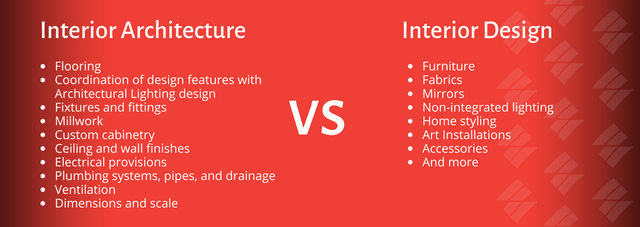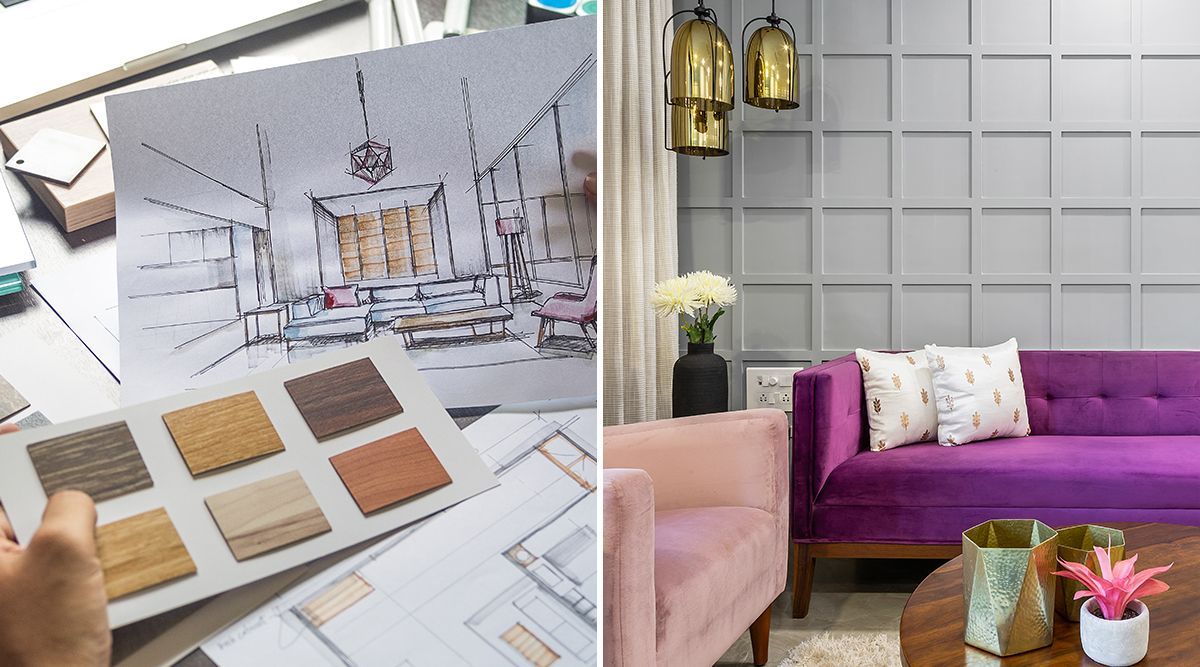The Art of Equilibrium: Just How Interior Design and Home Designer Collaborate for Stunning Results
In the world of home layout, striking an equilibrium in between appearances and capability is no tiny accomplishment. This fragile stability is attained via the unified partnership between interior developers and engineers, each bringing their unique knowledge to the table. Stay with us as we explore the intricacies of this joint procedure and its transformative effect on home style.
Understanding the Core Differences In Between Interior Decoration and Home Architecture
While both Interior Design and home style play essential duties in producing visually pleasing and functional rooms, they are inherently various self-controls. Home architecture largely concentrates on the structural facets of the home, such as developing codes, safety and security guidelines, and the physical building of the room. It takes care of the 'bones' of the structure, dealing with spatial dimensions, load-bearing walls, and roofing system layouts. On the other hand, Interior Design is much more worried with improving the aesthetic and sensory experience within that structure. It includes selecting and setting up furniture, picking color pattern, and integrating decorative components. While they operate in tandem, their duties, obligations, and areas of knowledge split considerably in the production of a harmonious home setting.
The Harmony Between Home Architecture and Inside Design
The synergy in between home style and Interior Design lies in a shared vision of design and the enhancement of practical aesthetic appeals. When these 2 areas straighten harmoniously, they can transform a space from regular to remarkable. This partnership calls for a much deeper understanding of each technique's principles and the ability to develop a natural, aesthetically pleasing environment.
Unifying Layout Vision
Linking the vision for home style and Interior Design can develop an unified space that is both functional and aesthetically pleasing. The balance begins with an integrated frame of mind; designers and interior designers collaborate, each bringing their know-how. This unison of concepts develops the style vision, a blueprint that guides the project. This shared vision is essential for consistency throughout the home, ensuring a liquid change from outside design to interior spaces. It advertises a collaborating strategy where building aspects complement Interior Design parts and the other way around. The result is a cohesive space that shows the property owner's preference, way of life, and personality. Thus, unifying the layout vision is vital in mixing design and Interior Design for magnificent outcomes.
Enhancing Useful Appearances
Exactly how does the synergy between home design and indoor style improve useful appearances? Architects lay the groundwork with their architectural layout, guaranteeing that the area is efficient and sensible. An engineer may develop a house with high ceilings and large home windows.
Significance of Collaboration in Creating Balanced Spaces
The cooperation between indoor designers and architects is crucial in producing balanced areas. It brings harmony in between style and architecture, bring to life spaces that are not just cosmetically pleasing yet additionally useful. Discovering effective collective techniques can offer insights right into how this harmony can be properly accomplished.
Harmonizing Layout and Design
Equilibrium, an important element of both Interior Design and design, can just really be attained when these two areas operate in consistency. This consistency is not merely an aesthetic consideration; it impacts the capability, toughness, and ultimately, the livability of an area. Inside developers and architects need to comprehend each other's functions, respect their know-how, and connect properly. They need to take into consideration the interplay of architectural components with decor, the flow of areas, and the influence of light and shade. This collaborative process leads to a cohesive, balanced design where every aspect has a function and adds to the overall aesthetic. Balancing style and design is not just regarding producing stunning areas, but about crafting spaces that work seamlessly for their inhabitants.
Successful Joint Methods

Instance Researches: Successful Combination of Design and Style
Taking a look at a number of case research studies, it becomes noticeable exactly how the successful assimilation of Interior Design and architecture can change an area. The Glass House in Connecticut, renowned for its minimalistic sophistication, is one such example. Engineer Philip Johnson and interior developer Mies van der Rohe collaborated to develop a harmonious equilibrium in between the framework and the inside, resulting in a seamless circulation from the exterior landscape to the internal living quarters. Another prototype is the Fallingwater Residence in Pennsylvania. Designer Frank Lloyd Wright and indoor designer Edgar Kaufmann Jr.'s collective efforts lead to a strikingly unique home that mixes with its natural environments. These study underscore the profound effect of an effective design and design cooperation.

Getting Rid Of Challenges in Layout and Architecture Cooperation
Regardless of the indisputable benefits of an effective collaboration in between Interior Design and style, it is not without its challenges. Communication issues can arise, as both parties may make use of different terminologies, understandings, and approaches in their work. This redirected here can lead to misconceptions and delays in job completion. One more major difficulty is the harmonizing act of looks and functionality. Designers might prioritize architectural integrity and security, while developers focus on convenience and design. The integration of these goals can be intricate. Furthermore, budget and timeline restraints frequently include stress, potentially triggering breaks in the cooperation. Efficient communication, shared understanding, and concession are critical to overcome these challenges and accomplish a effective and unified cooperation.

Future Fads: The Progressing Relationship Between Home Architects and Inside Designers
As the world of home design continues to evolve, so does the relationship between architects and interior developers. Alternatively, indoor designers are welcoming technological facets, affecting total design and performance. The future guarantees a more cohesive, innovative, and flexible strategy to home style, as developers and engineers continue to blur the lines, fostering other a partnership that absolutely symbolizes the art of balance.
Conclusion
The art of balance in home layout is achieved via the unified partnership between indoor developers and architects. An understanding of each various other's techniques, efficient communication, and shared vision are crucial in developing aesthetically magnificent, practical, and inviting rooms. In spite of challenges, this collaboration promotes development and advancement in design. As the partnership in between home architects and interior developers advances, it will certainly remain to form future trends, boosting comfort, efficiency, and individual expression in our living areas.
While both interior style and home architecture play crucial roles in developing aesthetically pleasing and practical rooms, they are inherently various self-controls.The harmony in between home architecture and indoor layout lies in a shared vision of design and the improvement of useful looks.Linking the vision for home design and indoor layout can create a harmonious living area that is both useful and aesthetically pleasing. Therefore, unifying the layout vision is essential in blending design and indoor layout for stunning results.
Exactly how does the harmony in between home architecture and interior style improve useful aesthetics? (Winchester architect)
Comments on “Elevate Your Home with a Skilled Experienced Architect in Winchester Near You”